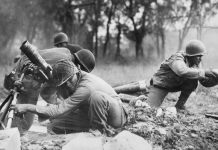Check with any library or bookstore—both physical and online—and you’re likely to find a tremendous amount of books written on chess. Some books are designed to teach beginners how to play chess, books that deal with either opening moves or end games, books on algebraic chess notation, and even books dedicated to teaching children how to play. How is a person supposed to find the best chess books available among thousands of different books? It’s easy, especially if a person is reading this guide. We’re going to go over the best books on chess currently available, so players and potential players can find the one that’s right for them.
Quick Summary of the Best Chess Books
- Best Overall
Logical Chess: Move By Move: Algebraic Edition (Amazon) – Review - Best For Advanced Players
Chess: 5334 Problems, Combinations & Games (Amazon) – Review - Best Versatile
My 60 Memorable Games By Bobby Fischer (Amazon) – Review - Best For Children
Chess for Kids (Amazon) – Review - Best For Beginners
Silman’s Complete Endgame Course (Amazon) – Review - Best Grandmaster Advice
Complete Book Of Chess Strategy: Grandmaster Techniques (Amazon) – Review - Best Chess Openings
Modern Chess Openings 15th Edition (Amazon) – Review - Best General Information
Bobby Fischer Teaches Chess (Amazon) – Review - Best Introduction To Chess
How To Play Chess For Absolute Beginners (Amazon) – Review - Also Recommended (Introduction To Chess)
Chess For Children (Amazon) – Review
Best Overall: Logical Chess: Move By Move: Algebraic Edition
This chess book is one that’s been around for quite some time. According to its copyright page, it was originally copyrighted in 1957, with several editions published between 1998 through 2005. And there’s a good reason why this book has continued to sell so well for so many years, and that’s because it’s one of the best books for beginners to learn chess. The author of this book, Irving Chernev, explains 33 complete games in vivid detail, giving not only the algebraic notation for the games but breaking down each of the reasons behind the moves. This allows new players to absorb some of the best techniques of play.
What are some of the games that he breaks down in this book? Well, some of the Kingside Attacks listed in this book include Blackburne-Blanchard (London, 1891), Flohr-Pitschak (Liebwerder, 1934), and Tarrasch-Kurschner (Nuremberg, 1889). It also covers Queen’s Pawn Openings including Pillsbury-Mason (Hastings, 1895), Rubinstein-Salwe (Lodz, 1908), and Chernev-Hahlbohm (New York, 1942). This is a book that provides a good introduction to newer players and does it without alienating them. Of course, its simple style means that once the player moves past the beginner stage, they will probably outgrow this book quickly.
Best For Advanced Players: Chess: 5334 Problems, Combinations & Games
Once a chess player has advanced beyond the beginner stage, they’re going to want to continue to sharpen their skills. While there are plenty of books that can serve that purpose, we feel that this is one of the best chess books that will help intermediate and even advanced players continue to sharpen their chess skills. This book contains over 5,000 situations and it contains clear diagrams in it. It contains 306 one-move mates, over 3400 two-move mates, 144 endgames, over 120 tournaments game combinations, and over 6,000 illustrations.
This book is written by László Polgár, a Hungarian chess teacher that’s well known for his writings on chess and is considered by many to be a master coach. He has coached his daughters to several world championships and eleven Olympic gold medals. Its foreword is written by Bruce Pandolfini, a North American chess teacher who himself has authored 18 instructional chess books. In the film ‘Searching For Bobby Fischer,’ he is portrayed by Ben Kinglsey. This is probably one of the largest collection of chess moves compiled in one volume that’s ever been written, which makes it a great choice for many players.
Best Versatile: My 60 Memorable Games By Bobby Fischer
Widely considered to be one of the greatest chess books ever written, this book is a must-have for players of just about any level. It’s written by Bobby Fischer who has gone through great pains to take the player move-by-move through sixty of his most informative games. Some of the games that can be found in this volume include the 1957 New Jersey Open versus Sherwin, Stockholm 1962 versus Bertok, 1963 USA Championship versus Benko, and 1967 Monaco versus Larsen. This is an updated version of the book where the moral right of the author has been asserted, so controversial alterations to Bobby Fischer’s original words have been omitted.
It’s a book that provides insight into the genius of Bobby Fischer and is a must-have for players of any level. If there was one complaint that we had about this book, it was the fact that it uses figurine algebraic notation, which is fine for the print version of the book but doesn’t work out too well for the Kindle version of the book. That’s because the digital version of the book makes the figurine notation too small and that can make it difficult for some people to read. If it wasn’t for that slight flaw, this book could easily be placed at the top of our list.
Best For Children: Chess for Kids
Parents who are looking for a good introduction to chess for their children are going to like this book. It’s written by International Chess Master Michael Basman and it’s designed to spark interest in the game for young players. It has chapters that include the history of the game, the chess set, a look at the pieces, opening moves, tactics, end games, and a few other key areas. Unfortunately, what’s lacking in this book is any lengthy course on the subject. Sure, it goes over the basics and helps to spark enthusiasm in the budding player, but in our opinion, it doesn’t go far enough in its lessons.
The one thing that this book does have going for it, however, is that both of its versions are inexpensive. Parents can easily afford either the paperback or hardback of this book and easily afford another chess book that deals less with history and more with game mechanics. We think that this is a good book for any young chess player’s bookshelf, but it certainly can’t be the only book. It should only be used to start the child off on their chess journey and shouldn’t be considered a book that will cover everything. If parents keep this in mind, their child is most likely going to get good use out of this book.
Best For Beginners: Silman’s Complete Endgame Course
Proper endgame skills are something every player wants and needs, and this book is designed to give the player a good foundation. And for that purpose, it does a good job. However, we feel that as it tries to avoid becoming overstuffed with endgames, they may have left out the more complex endgame combinations that advanced players need. For beginning and intermediate players, on the other hand, we found this book to be pretty comprehensive.
It has plenty of endgames for beginning players (unrated through 999), endgames for Class E players (rated 1000-1199), Class D players (rated 1200-1399), Class C players (1400-1599), and so on. The only deficit we feel that it has are endgames for Class A players and above. If there were a greater level of complexity among the endgames in these categories, then we feel that it would be a complete endgame course, but as it stands, we can’t make that assertion.
Best Grandmaster Advice: Complete Book Of Chess Strategy: Grandmaster Techniques
Advanced players are always in need of solid techniques and that’s why this book is invaluable to many players of advanced ranking. This book contains 360 pages that are jam-packed with information that players can use to take their game to the next level. Some of the moves detailed in this guide include Benko’s Gambit, the Budapest Gambit, The King’s Gambit, Ruy Lopez, Torre Attack, and Two Knight’s Defense. It also has middle game moves that include Pins & Skewers, Pawn Islands, Tripled Pawns, and Hanging Squares. Some of the endgame topics detailed include Cat & Mouse, Passed Pawn’s In A Queen’s Endgame, and Using The King.
Of course, the moves and topics we’ve listed above are only a fraction of what’s available in the book. There’s a ton more, as well as sections on Blunders, Point Count, Psychology, and Time Pressure. At initial glance, that seems like everything an advanced player would need, but we did find this book deficit in one area: its detailed explanations. It works hard to cram in as many techniques as possible, and as a result, its analysis is lacking in several places. However, we still think that it’s a great chess book, it just doesn’t have as great as an impact as it should’ve had.
Best Chess Openings: Modern Chess Openings 15th Edition
Let’s begin our review by stating that we thoroughly enjoyed this chess book and thought that it was a classic that should be on every serious chess players’ bookshelf. With that being said, however, we did find a few typos and errors that seriously shouldn’t have made it into the final run of the book. However, even with these minor errors, we still feel this book presents some seriously valuable information. It was written by Nick de Firmian, who is one of the leading experts on chess openings. At the time he wrote this book, he was the U.S Chess Champion and had won three titles.
What can be found in this book? A variety of chess openings can be found in this book and they include Double King Pawn Openings, Semi-Open Games, Double Queen Pawn Openings, Indian Openings, and Flank Openings. Although it’s impossible to list all of the specific openings in this review, some of the more important ones include Evan’s Gambit, Two Knight’s Defense, Three Knight’s Game, Latvian Gambit, French Defense, and Pirc Defense. Of course, that’s only a small sample of what this book has to offer, and most players are going to want to have a copy of this book on their shelf.
Best General Information: Bobby Fischer Teaches Chess
Even though this book is supposed to be written for beginner to intermediate chess players, we found that it’s more for intermediate players than players who are new to chess. That’s not us being over critical of the material, that’s just a fact. However, now that we’ve gotten that out of the way, it’s a good time for us to discuss what this book does well for these intermediate players. And we’re going to start with its programmed learning method. This is a method that asks the reader to answer a question, and if the reader gives the wrong answer, it explains and has the reader go back. That allows the reader’s skill to advance as they use the material.
This book covers the elements of checkmate, back-rank mates, and displacing defenders. And it’s written in a concise way that’s easy for just about everyone to understand. All things considered, we feel that this is a great book for players who aren’t raw beginners, but already know the fundamentals of the game. This book won’t make the reader the best chess player around, but it will help to sharpen some of their fundamentals so they can take their game to the next level. For that reason alone, we feel this book is a good addition to any chess library.
Best Introduction To Chess: How To Play Chess For Absolute Beginners
For anyone who’s played a game of chess before, this book is probably not for them. However, for potential players who aren’t sure how the pieces move or how the game is played, this is an excellent book to start with. This book not only explains chess notation to the player but also teaches the player how the pieces move and how the board is setup. And this is where many beginner books fail in trying to introduce the game to players. Those books assume the person already knows something about the game. This book, on the other hand, assumes no such thing and acts as if the person had never seen the game played before.
This square-one approach makes it easy for players new to the game to begin their journey, but it may be tedious for some beginners who already have a grasp of chess fundamentals. For the uninitiated, however, it will provide everything needed for them to get started. The reader will learn how each piece moves, how to set up the board quickly and accurately, tips on perfecting a strategy, how to visualize the game in your mind, and a lot more. It truly is a great book for anyone who has wanted to play chess but was afraid that it might be too technical. This simplifies the game enough that anyone can learn it quickly.
Also Recommended (Introduction To Chess): Chess For Children
Even though we felt that this book could’ve covered a little bit more material, it was otherwise a great book for children. Children who read this book will learn about the chessboard and the pieces, how to set up the board, how the pieces move, reading and writing chess notation, giving and escaping checks, castling, pawn promotion, and chess draws.
It also covers some basic tactics that include forks, pins, and skewers. Another thing that it covers is some basic strategy, although we do think that it could’ve gone a little bit further in this area. Even so, it’s a great book for introducing children to chess and makes a great gift.



































